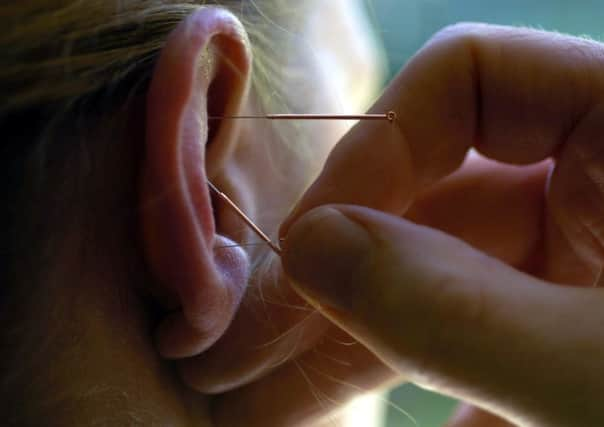Scotland sets the standards for chronic pain


Insensitivity to pain is a rare, though life-threatening, genetic condition, and in his book The Gift of Pain, Paul Brand described the identification of “painlessness” as the most dangerous and defining aspect of leprosy.
But what happens when the “normal” pain persists after the threat is gone or the injury healed? Or what happens if an underlying illness or disease keeps producing pain?
Advertisement
Hide AdAdvertisement
Hide AdThis is when chronic pain arises – “pain that persists beyond normal tissue-healing time”. A study of over 44,000 Europeans found that one in five adults currently experiences severe, disabling and debilitating chronic pain and our own research in Scotland even puts the figure slightly higher.
Chronic pain severely affects physical, psychological and social health, reduces productive working life, and has a growing impact on individuals, their families and carers, society and the healthcare services. Once present, it generally lasts for many years, and as it is commoner in older adults, it is becoming more widespread as our society ages. We therefore need effective healthcare services and treatments to address chronic pain in the community, primary care and hospitals.
Despite this, chronic pain has only recently begun to receive the political and scientific attention it deserves. In Scotland, between 1994 and 2008, a series of national reports highlighted both the need for, and lack of uniform high-quality pain service provision. These reports remained shelved. In 2002 Malcolm Chisholm, Minister for Health and Community Care, dismissed chronic pain as “a symptom, not a disease”.
The evidence, then and now, does not support this. Common biological and psychological mechanisms lead to common experiences and outcomes, irrespective of the underlying cause of chronic pain. Indeed, very often, no underlying cause can be identified, despite extensive medical investigation.
Happily, in response to extensive lobbying, in 2008 the government recognised chronic pain as “a long-term condition in its own right”. This stimulated progress in policy, research and development. Interestingly, Scotland’s was probably the first government to make such a statement.
A national chronic pain steering group was established, and Dr Stephen Gilbert was appointed the first lead clinician for chronic pain (in tabloidspeak, “pain tsar”). A chronic pain service model was agreed nationally, with an identifiable, standard “patient pathway”, from management in the community, right through to highly specialist clinics.
This all requires multi-disciplinary assessment and treatment. A managed clinical network established in Glasgow provides a model for integrating the required services and this has been adopted by the NHS across the country. Improvement of chronic pain service provision is now a priority for all NHS boards, and each of them funds and supports a pain service improvement group. Finally, approval has just been given for the first residential chronic pain service in Scotland, providing intensive treatment for those most severely affected.
What about new treatments for chronic pain? There have been no new drug classes since the non-steroidal anti-inflammatory drugs in the early 1960s. Some drugs, such as anti-depressants and anti-epileptics, have been “re-purposed”, and new preparations of others have been developed, for example providing sustained release of morphine.
Advertisement
Hide AdAdvertisement
Hide AdBut medication is only part of the story. We also need to develop and review non-pharmacological treatments, including psychological approaches, exercise and activity, and complementary techniques such as acupuncture. Self-management approaches, including education, avoiding sedentary behaviour and increasing in general daily activity levels, mindfulness, personal goal-setting and pacing should always be part of the management of chronic pain.
In universities and the NHS all across Scotland, researchers are actively pursuing improvements in the understanding and treatment of pain. This week the University of Dundee has hosted the annual scientific meeting of the Scottish Pain Research Community (SPaRC), an offshoot of the national chronic pain steering group.
SPaRC promotes the aspirations that treatment of pain in Scotland is informed by the best evidence; and pain research in Scotland addresses the most important clinical questions. With research ranging from intra-cellular and molecular mechanisms of pain and drug response, to population-based trials and evaluation of service innovations, SPaRC presents an active and internationally-competitive approach to addressing this huge problem.
The Scottish Intercollegiate Guideline Network (Sign) published the first evidence-based guideline covering the management of chronic pain, in December 2013. Led by Dr Lesley Colvin, a consultant in pain medicine, this impressive project identifies and collects, for the first time, the best available evidence for all forms of non-specialist treatment, and is available to patients and professionals internationally.
Although we have made considerable progress in recent years, there is much more to be done. At least we have recognised the problem now, but let’s all keep working. More information for patients and professionals is available at www.chronicpainscotland.org
• Blair H Smith is professor of population health science at University of Dundee; and consultant in pain medicine at NHS Tayside
SEE ALSO